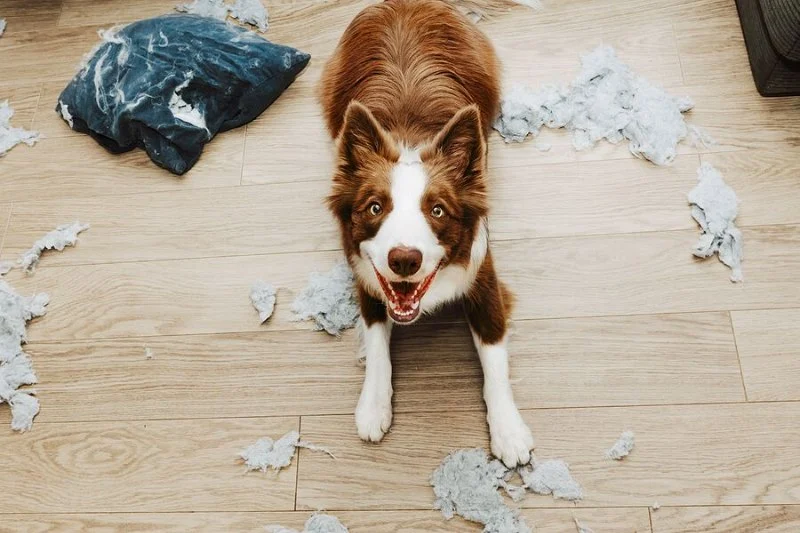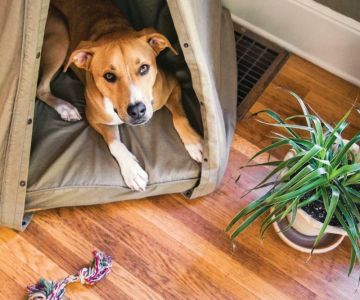
Dealing with Separation Anxiety in Dogs & Cats
- 1 - Understanding Separation Anxiety in Pets
- 2 - Common Signs of Separation Anxiety in Dogs and Cats
- 3 - How to Manage Separation Anxiety in Dogs and Cats
- 4 - Case Study: Helping a Dog Overcome Separation Anxiety
1 - Understanding Separation Anxiety in Pets
Separation anxiety in pets, especially in dogs and cats, is a common but serious condition that can lead to destructive behaviors and emotional distress. This type of anxiety occurs when pets experience extreme stress or fear when they are separated from their owners. Understanding the root causes and triggers of this condition is the first step in helping your pet cope.
1.1 Why Do Pets Experience Separation Anxiety?
Pets form strong emotional bonds with their owners, and when they are left alone, they can feel insecure, abandoned, and fearful. In particular, dogs are pack animals that thrive on companionship, and cats, though more independent, can also develop a strong attachment to their owners. When these bonds are disrupted, pets may react with anxiety.

West Phoenix Veterinary Hospital
6530 W Indian School Rd, Phoenix, AZ 85033, USA
1.2 Causes of Separation Anxiety
Several factors can contribute to separation anxiety in pets, including:
- Changes in the household, such as moving to a new home or the arrival of a new family member.
- Sudden changes in routine, like a pet owner going back to work after a long period at home.
- Past traumatic experiences, such as being abandoned or rehomed.
- Genetic predisposition, where certain breeds may be more susceptible to anxiety-related issues.
2 - Common Signs of Separation Anxiety in Dogs and Cats
Recognizing the signs of separation anxiety is essential in order to help your pet effectively. Symptoms can vary between dogs and cats, but they typically include a combination of physical and behavioral signs.
2.1 Symptoms in Dogs
Dogs with separation anxiety often display the following behaviors:
- Excessive barking, whining, or howling when left alone
- Destructive behavior, such as chewing furniture or scratching doors
- Accidents in the house despite being house-trained
- Pacing or restlessness when their owner prepares to leave
- Excessive drooling or panting
2.2 Symptoms in Cats
While cats are generally more independent, they can also suffer from separation anxiety. Common signs in cats include:
- Excessive meowing or crying when alone
- Scratching or urinating outside the litter box
- Hiding or seeking excessive attention when the owner returns home
- Changes in eating or sleeping habits
3 - How to Manage Separation Anxiety in Dogs and Cats
There are several effective methods to help manage and reduce separation anxiety in both dogs and cats. While the approach may differ depending on the severity of the condition, these strategies can help ease your pet’s distress and improve their emotional well-being.
3.1 Gradual Desensitization
One of the most effective techniques for treating separation anxiety is gradual desensitization. This method involves slowly getting your pet used to being alone. Start by leaving your pet alone for short periods and gradually increase the time you are away. This helps them realize that being alone is not as frightening as they perceive.
3.2 Create a Safe and Comfortable Space
Designate a safe, comfortable space for your pet when you’re away. For dogs, this could be a crate or a quiet room where they feel secure. For cats, a cozy corner with their favorite blanket or toys can create a calming environment. Consider using calming pheromone diffusers designed to reduce anxiety in pets.
3.3 Provide Distractions
Before leaving, try providing distractions to keep your pet entertained and focused on something other than your absence. For dogs, puzzle toys or treat-dispensing toys can be helpful. Cats might benefit from interactive toys or scratching posts. These activities can help divert their attention away from their anxiety.
3.4 Consider Professional Help
If your pet’s anxiety is severe, consider seeking help from a veterinarian or a professional animal behaviorist. They can help develop a more personalized treatment plan, which may include medication or more advanced behavioral therapies to reduce anxiety.
4 - Case Study: Helping a Dog Overcome Separation Anxiety
Let’s take a look at a real-life case of how a dog named Max overcame separation anxiety with the help of his owner, Sarah, and a professional trainer.
4.1 The Problem
Max, a 3-year-old German Shepherd, had severe separation anxiety. Whenever Sarah left for work, Max would bark incessantly, tear up furniture, and even damage the walls of the house. He would become extremely agitated, and his behavior only worsened when Sarah returned home, as Max would exhibit overexcitement and uncontrollable energy.
4.2 The Solution
Sarah worked with a professional trainer who recommended gradual desensitization. Over the course of a few weeks, Sarah started leaving Max alone for very short periods, only a few minutes at a time. As Max began to feel more comfortable with being alone, the trainer also introduced crate training to help Max feel secure in his own space. They used calming music and pheromone sprays to create a peaceful environment for him.
4.3 The Result
After several months of consistent training and behavior modification, Max’s anxiety was significantly reduced. He no longer destroyed the furniture, and his barking decreased drastically when Sarah left the house. Max learned that being alone wasn’t something to fear, and both Sarah and Max were able to enjoy a calmer, more peaceful routine.
If you’re struggling with separation anxiety in your pet, visit Pet & Puppy for expert advice and the best products to help reduce anxiety, including calming treats, toys, and pheromone sprays.








 1214 Central Store0.0 (0 reviews)
1214 Central Store0.0 (0 reviews) Burlington Pet Hospital4.0 (118 reviews)
Burlington Pet Hospital4.0 (118 reviews) ArkVets4.0 (426 reviews)
ArkVets4.0 (426 reviews) Hartzell Veterinary Service: Charles W. Hartzell, DVM and Sue Ann Hartzell, DVM4.0 (105 reviews)
Hartzell Veterinary Service: Charles W. Hartzell, DVM and Sue Ann Hartzell, DVM4.0 (105 reviews) Noah's Ark Animal Hospital4.0 (163 reviews)
Noah's Ark Animal Hospital4.0 (163 reviews) Jasper Pet Clinic4.0 (285 reviews)
Jasper Pet Clinic4.0 (285 reviews) Transitioning Training Methods as Pet Ages: Adapting Techniques for Senior Pets
Transitioning Training Methods as Pet Ages: Adapting Techniques for Senior Pets How to Read & Understand Pet Nutrition Labels for Your Pet's Health
How to Read & Understand Pet Nutrition Labels for Your Pet's Health How to Choose the Right Pet Supplement Brand: Essential Tips for Pet Owners
How to Choose the Right Pet Supplement Brand: Essential Tips for Pet Owners How Much Should You Feed Your Pet? Portion Guide by Age & Breed
How Much Should You Feed Your Pet? Portion Guide by Age & Breed How to Create a Pet Health Journal: Metrics to Track for Better Pet Care
How to Create a Pet Health Journal: Metrics to Track for Better Pet Care What Breed-Specific Health Issues You Should Be Aware Of
What Breed-Specific Health Issues You Should Be Aware Of